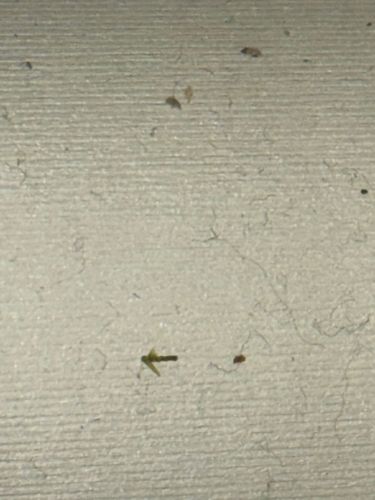Dust Mite
Scientific Name: Dermatophagoides spp.
Order & Family: Order: Acariformes, Family: Pyroglyphidae (e.g., Dermatophagoides farinae, Dermatophagoides pteronyssinus)
Size: 0.2 - 0.3 mm (microscopic, barely visible to the naked eye as tiny white specks)

Natural Habitat
Dust mites prefer warm (68-77°F or 20-25°C) and humid environments (70-80% relative humidity). They are commonly found indoors in homes, particularly in beds, pillows, mattresses, upholstered furniture, carpets, and curtains, where dead skin cells accumulate.
Diet & Feeding
Dust mites feed on organic detritus, primarily flakes of human and animal skin (dander). They do not drink water but absorb moisture from the atmosphere.
Behavior Patterns
Dust mites thrive in warm, humid environments. They are most active at night and tend to aggregate in areas with high human activity, such as beds, carpets, and upholstered furniture. They reproduce quickly, with females laying up to 100 eggs in their lifetime. Their life cycle from egg to adult is about 3-4 weeks.
Risks & Benefits
Potential Risks: Dust mites are a significant allergen for many people. Their fecal pellets and body fragments can trigger allergic reactions such as asthma, eczema, rhinitis (hay fever symptoms), and conjunctivitis. They do not bite or transmit diseases. Potential Benefits: In the broader ecosystem, dust mites contribute to the decomposition of organic matter, recycling nutrients. However, their primary impact in human environments is negative due to their allergenic properties.
Identified on: 8/29/2025